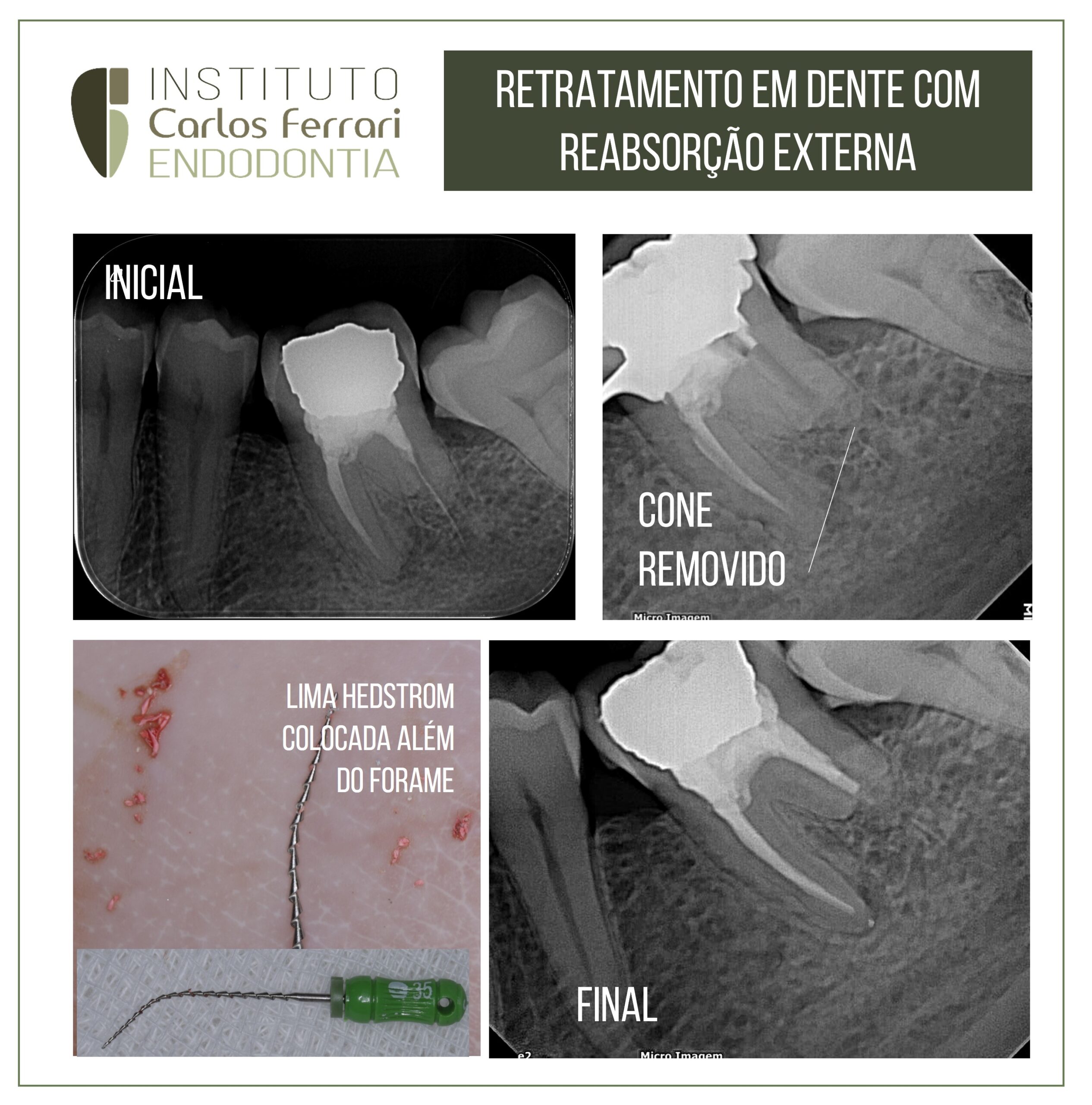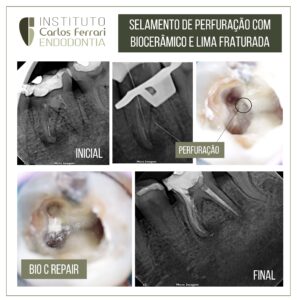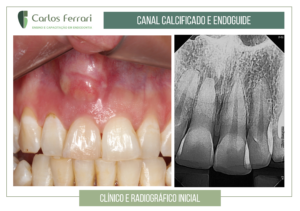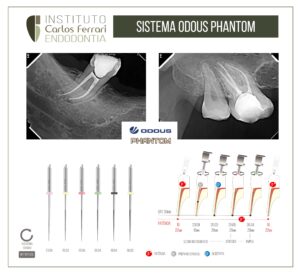Retreatment of a tooth with external resorption.
Asymptomatic patient referred for retreatment of tooth 37. Clinical tests were negative. The radiographic test revealed a partially treated canal, a distal root with external resorption and cone leakage in the same root.
The canal was uncovered by placing a hedtroem file inclined beyond the root, with quarter-turn movements, to remove the extravasated cone.
After emptying, the tooth was filled with Bio C Sealer cement.
Case conducted by Ana Paula Santos, a student in the endodontics specialization program at Chibebe Cursos in Taubaté.
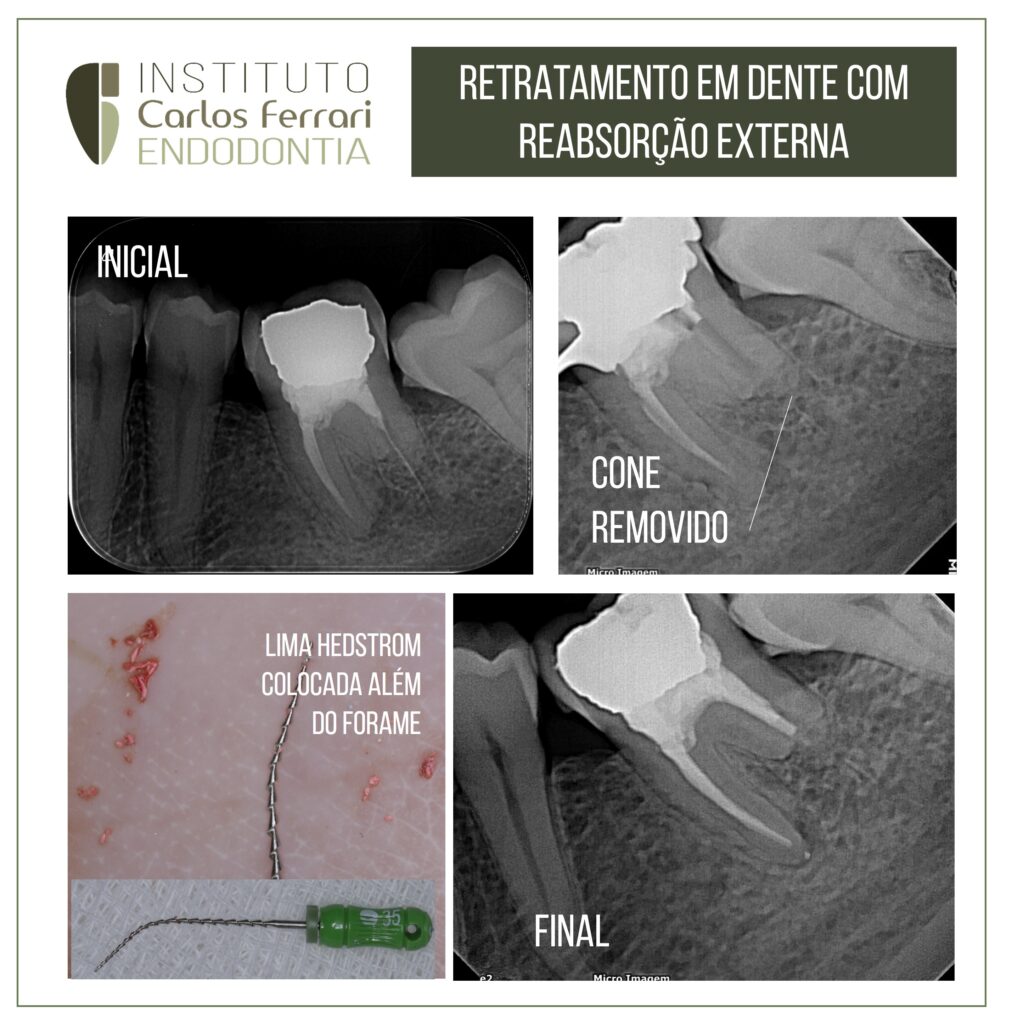
In: Nudera.Selective Root Retreatment: A Novel ApproachJ Endod 2015; 1-7.
Summary
Root canal retreatment is traditionally considered an "all or nothing" treatment approach. It is usually recommended that all restorative and filling materials should be removed from all roots, regardless of the presence or absence of periapical pathology. In contrast, surgery to endodontics is not viewed as an "all or nothing" treatment approach, Traditionally, only the diseased root(s) are addressed by apical resection and apical filling.
The use of cone beam computed tomography allows a more accurate assessment of the periapical condition of individual roots. This information has introduced a new, conservative treatment alternative for previously endodontically treated teeth with multiple roots showing post-treatment disease. This new approach is called selective root retreatment. Advanced imaging allows the clinician to make predictable treatment decisions regarding the presence or absence of periapical pathology of individual roots, rather than making assumptions about the tooth as a whole. Selective root retreatment combines the non-surgical retreatment treatment approach with the selectivity of surgical root resection. In this way, retreatment can be limited to a single root or roots clearly showing periapical pathology while leaving the root(s) with no visible or perceived pathotic sign untouched.
Retreatment of a tooth with external resorption


